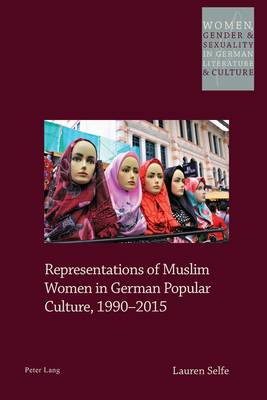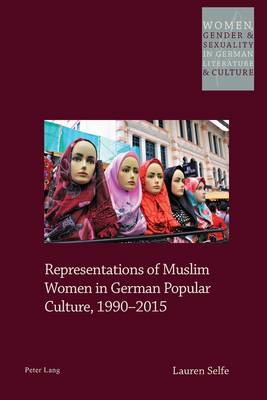
- Retrait gratuit dans votre magasin Club
- 7.000.000 titres dans notre catalogue
- Payer en toute sécurité
- Toujours un magasin près de chez vous
- Retrait gratuit dans votre magasin Club
- 7.000.0000 titres dans notre catalogue
- Payer en toute sécurité
- Toujours un magasin près de chez vous
Representations of Muslim Women in German Popular Culture, 1990-2015
Lauren SelfeDescription
The figure of the Muslim woman or girl performs a crucial role in far-reaching socio-political debates in Germany. Indeed, such figures challenge the boundaries of gender equality and secularism and contest notions of tolerance and integration. The (in)visibility of Muslim women's bodies and their apparent position in Islam function as ostensible indicators of their oppression and of Islam's supposed incompatibility with western values.
This book investigates representations of Muslim women and girls in German popular culture from 1990 to 2015. The study analyses the discursive function of such figures in German popular culture via three key research questions: what representational practices surround the figure of the Muslim woman or girl in German life writing, young adult literature and film? How do such representations function to produce non-Muslim subject positions? What is the function of this figure within narratives of feminism and assertions of gender equality? This study understands itself as an intervention into contemporary racist discourses in Germany and operates within a transdisciplinary framework of intersectional feminism and cultural and German studies. Ultimately, the book aims to make visible and interrogate
the underlying hierarchies and agendas that drive representations of Muslim women and girls.
This book was the winner of the of the 2017 Early Career Researcher Prize in German Studies, a collaboration between the Institute for German Studies at the University of Birmingham and Peter Lang.
Spécifications
Parties prenantes
- Auteur(s) :
- Editeur:
Contenu
- Nombre de pages :
- 264
- Langue:
- Anglais
- Collection :
- Tome:
- n° 21
Caractéristiques
- EAN:
- 9781787079977
- Date de parution :
- 05-07-19
- Format:
- Livre broché
- Format numérique:
- Trade paperback (VS)
- Dimensions :
- 147 mm x 224 mm
- Poids :
- 249 g

Les avis
Nous publions uniquement les avis qui respectent les conditions requises. Consultez nos conditions pour les avis.






